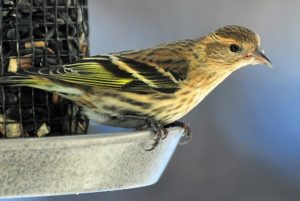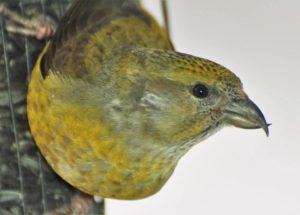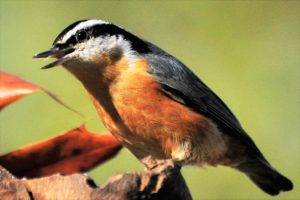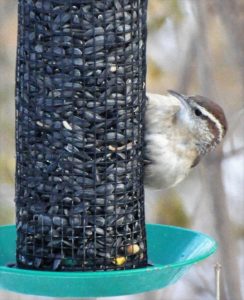Photography courtesy of Lowell Washburn, all rights reserved.
When it Comes to Winter Bird Feeding
Variety is the Spice of Life
It’s little wonder that backyard bird feeding has become one of our most popular winter pastimes. Visiting birdlife provides a sense of energy, warmth, and cheer to an otherwise bleak and lifeless landscape.
We’ve all heard it said that variety is the spice of life. When it comes to winter bird feeding, that time worn phrase certainly rings true. The more species of birds we attract, the more interesting our feeders become.
Backyard activities become even more intriguing whenever something new or unusual pays a visit. In some cases, it might be a species we only see once or twice a year; or during some winters not at all. Defining which birds constitute “new or unusual” may depend largely on where you live. Species that are fairly common in southern Iowa may be virtually nonexistent in the north and vice versa. For me; redpolls, purple finches, pine siskins,  and red-breasted nuthatches
and red-breasted nuthatches
fall into this category. Sometimes we spot a bird we’re not quite sure of; a mysterious feathered visitor that sends us scrambling for the bird guide. On the rarest occasions, it might even be a bird that we’ve never ever seen before.
That’s what happened to me earlier this week when I spotted a beautiful Carolina wren extracting sunflower seeds from one of my feeders.
Although the species is said to occur in Iowa with “uncommon frequency”, it remains rare enough that, until now, I had never seen one. Capturing a few voucher photos made the experience even more pleasurable. Other backyard oddities have included a western rufous-sided towhee, red-breasted nuthatches, and a female red crossbill.
Regardless of the number of species we attract, no one can argue that busy feeders make a cold Iowa winter more enjoyable. Having something out of the ordinary pop in only adds to the fun. When it comes to backyard bird feeding; variety is the spice of life.
LW



 Susan Judkins Josten
Susan Judkins Josten Rudi Roeslein
Rudi Roeslein Elyssa McFarland
Elyssa McFarland Mark Langgin
Mark Langgin Adam Janke
Adam Janke Joe Henry
Joe Henry Sue Wilkinson
Sue Wilkinson Tom Cope
Tom Cope Kristin Ashenbrenner
Kristin Ashenbrenner Joe Wilkinson
Joe Wilkinson Dr. Tammy Mildenstein
Dr. Tammy Mildenstein Sean McMahon
Sean McMahon